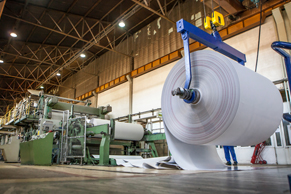Can the Paper Industry turn a New Leaf?
Published by Sharekhan Education | March 28, 2022

Can the Paper Industry turn a New Leaf?
Amit Pathak | Sharekhan Education
Here’s a lesser-known fact: there are two types of paper – Recycled paper and Mill-based paper. And while recycled paper is made out of waste paper collected from universities, colleges, consumers, and other garbage sources, mills’ paper is made out of wood pulp and is used as coated paper. Generally, mills’ paper is the costlier of the two. But you may ask “why this talk about paper all of a sudden?” Well, here’s why!
Tough Times
The Indian paper industry recently went through one of its toughest phases in history during the Covid-19 pandemic, which caused many offices, courts, and schools to remain shut for a very long period. The prolonged closures resulted in an acute shortage of waste paper – a key raw material needed to produce recycled paper. The ongoing Russia-Ukraine conflict further aggravated the issue as it led to the non-availability of shipping containers for logistics. And lastly, Coal, chemical, and transportation costs have increased for all the mills.
Waste paper imports meet nearly 70% of the raw material demand for India’s paper industry, and hence Indian paper industry is at a greater risk of supply-side constraints. To add to the misery, European Union banned the export of waste paper. And now the prices of raw materials have increased 60-70% in the last six months.
Developments in China have further complicated the issue for the Indian paper industry. In addition to banning imports of old corrugated cases of boxes and waste paper from this year, China has begun importing recycled pulp. That led to the consequent problem of Beijing taking away a lot of Kraft paper from India, which then could have been converted into pulp.
Revival on the Horizon
Not all is dark and dreary for the industry though. The demand for paper is expected to improve as educational institutes, offices, courts, and other organizations are now open. And with rising disposable income among the Indian public, we expect individuals to spend more on various products that could increase the per capita consumption of paper. This increase in consumption, in turn, means higher waste paper generation. Our existing per capita consumption is 20-30 kg a year, a fraction of what the Western world generates – 350 kg.
Another positive is the anti-plastic movement in India promoting paper instead of plastic for packaging and storage – and we see modern retail channels such as departmental stores, supermarkets, and online sites doing the same.
Despite the supply-side pressure, the favorable pricing scenario emerging for Grade A paper mills and the consequent pickup in demand bodes well for the Indian paper industry. Investors can expect significant improvement in profitability for JK Paper, West Coast Paper, and Andhra Paper over the coming few quarters.
If you would like to understand more about the art of investing, then go ahead and register for one of our free Power Money Workshops and join our investing education program – Stock Investor to polish your investing skills. Not only do we teach you the step-by-step process of identifying fundamentally sound stocks, but you also learn how to invest like a professional. So, come and experience it yourself!
By Enrolling yourself in this stock market course, a learner can learn the basics and the various aspects of trading in Futures and Options Trading.
By Enrolling yourself in this stock market course, a learner can learn the basics and the various aspects of trading in Futures and Options Trading.




